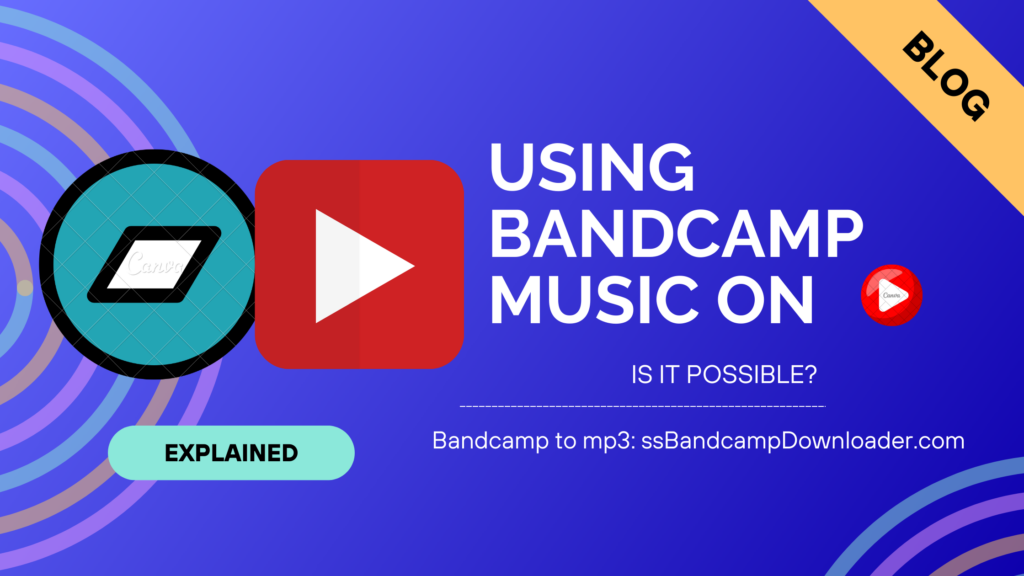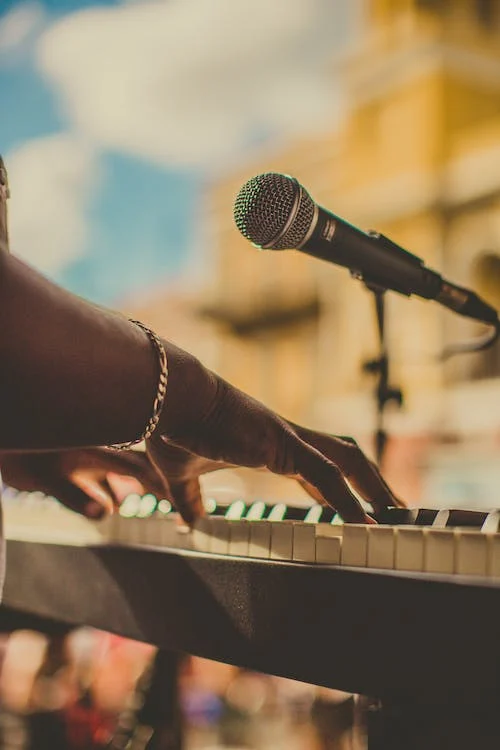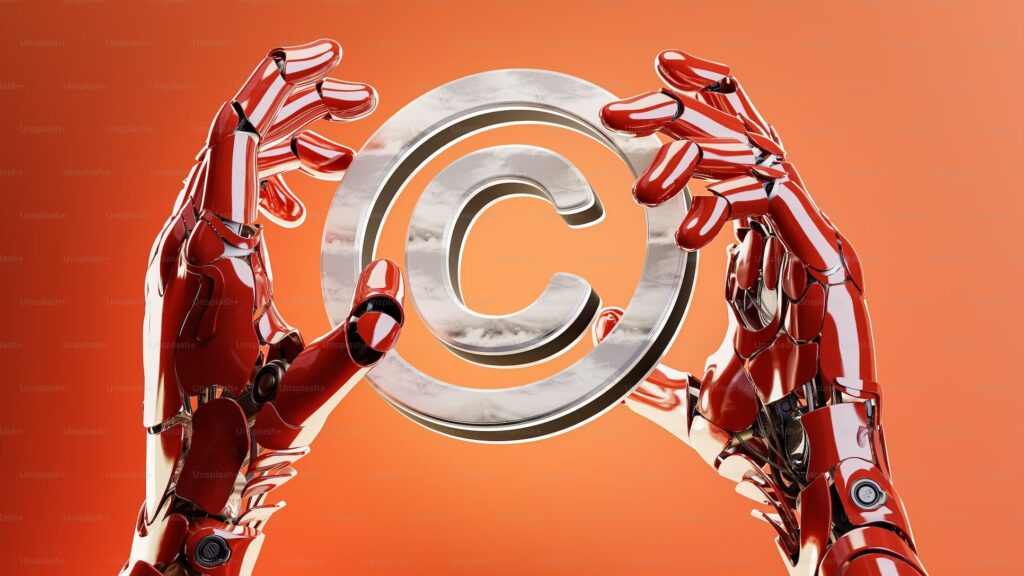In the dynamic world of online content creation, music plays a pivotal role in enhancing the appeal of YouTube videos. However, using music without proper understanding of copyright laws can lead to serious consequences. This article delves into the question of whether you can use Bandcamp music on YouTube, addressing the complexities surrounding this issue.
Bandcamp, a platform known for supporting independent artists, offers a wide array of music, but the rules for its usage on YouTube are not always crystal clear. We aim to shed light on the subject, guiding content creators and musicians towards responsible and legal collaboration while respecting copyright and artist rights.

Understanding Bandcamp Music
Bandcamp, a popular platform for independent musicians and bands, has gained recognition for its support of artists seeking creative freedom and direct interaction with their fanbase. It serves as a marketplace where artists can sell their music directly to listeners, often with more favorable revenue-sharing models compared to mainstream music distribution platforms.
On Bandcamp, you’ll find a diverse range of music genres, from indie rock to electronic, jazz to hip-hop, and everything in between. This eclectic mix attracts music enthusiasts looking for unique, undiscovered sounds and artists aiming to connect with their niche audience.
One of the defining features of Bandcamp is its “pay-what-you-want” pricing model, allowing fans to decide how much they want to pay for an album or track. This flexibility empowers both musicians and listeners, fostering a sense of community and support within the platform.

While Bandcamp champions artists’ autonomy and creativity, it’s essential to recognize that the music hosted on the platform is still protected by copyright laws. Artists retain the rights to their creations, and these rights are not automatically waived by uploading their music to Bandcamp. This aspect is crucial to understand when considering the use of Bandcamp music on platforms like YouTube, where copyright enforcement is stringent.
In the next sections, we will explore the intricacies of using Bandcamp music on YouTube, including the legal avenues and potential risks associated with such usage. It’s vital to navigate this landscape with respect for artists’ rights and within the bounds of copyright law.
YouTube’s Copyright Policies
YouTube, as one of the largest video-sharing platforms on the internet, enforces strict copyright policies to protect the rights of content creators, including musicians, and to ensure compliance with international copyright laws. Understanding these policies is essential when considering the use of Bandcamp music on your YouTube channel.
YouTube employs a robust system called Content ID to identify and manage copyrighted material within uploaded videos. This system scans videos for audio and visual content, comparing it to a vast database of copyrighted material submitted by rights holders, including music labels and independent artists. When a match is found, YouTube takes action, which may include demonetizing the video, blocking it entirely, or allowing the copyright owner to monetize it through ads.

Using copyrighted music on YouTube without the necessary permissions or licenses can lead to various consequences, such as:
- Video Removal: YouTube has the authority to remove videos that violate copyright policies. This could result in a loss of your content and potential penalties for your channel.
- Monetization Issues: If your video contains copyrighted music, any revenue generated from ads on that video may go to the copyright owner, not you, even if you’re the original creator.
- Channel Strikes: Repeated copyright violations can lead to strikes on your channel. Accumulating strikes can result in channel suspension or termination.
It’s crucial to note that YouTube’s copyright policies are designed to protect the rights of content creators, including musicians who share their work on the platform. However, these policies also mean that using Bandcamp music on YouTube without proper authorization can lead to significant challenges and legal issues.
In the following sections, we will explore the legitimate ways to use Bandcamp music on YouTube, ensuring that you can incorporate music into your videos while respecting copyright laws and maintaining a positive online presence.
Using Bandcamp Music on YouTube
If you’re an aspiring content creator or filmmaker who wants to use Bandcamp music in your YouTube videos, there are ways to do so while respecting copyright laws and supporting independent artists. Here, we’ll explore the legitimate methods for incorporating Bandcamp music into your YouTube content.
Purchasing Licenses:
- Many Bandcamp artists offer licenses for their music, allowing you to use it in your YouTube videos legally. These licenses often come with specific terms and conditions, including how the music can be used, for what duration, and whether you need to provide attribution.
- Ensure you thoroughly read and understand the licensing terms before purchasing, as they can vary from artist to artist.
Royalty-Free Music on Bandcamp:
- Some Bandcamp artists provide their music under a royalty-free or creative commons license. This means you can use their music without worrying about copyright issues, as long as you adhere to the terms specified in the license.
- Always check the specific licensing details, as they may require attribution or prohibit certain uses.
Explicit Permission:
- You can also reach out to Bandcamp artists directly and ask for their explicit permission to use their music in your YouTube videos. Building a positive and respectful relationship with artists can lead to collaborations and mutually beneficial arrangements.
- When obtaining permission, make sure to have written documentation or email correspondence as proof.
Proper Attribution:
- Regardless of the method you choose, it’s essential to provide proper attribution to the artist whenever required by the licensing terms. This typically involves including the artist’s name and the track title in your video description.
By following these steps, you can use Bandcamp music on YouTube in a legal and ethical manner. Remember that respecting artists’ rights and abiding by copyright laws not only protects your channel from potential issues but also supports the vibrant independent music community on platforms like Bandcamp.
In the next section, we’ll explore the potential risks and consequences of using Bandcamp music on YouTube without proper authorization, emphasizing the importance of responsible content creation.
Risks of Unauthorized Usage
Using Bandcamp music on YouTube without proper authorization or without adhering to copyright laws can pose significant risks to your YouTube channel and your online presence as a content creator. It’s crucial to be aware of these risks before incorporating music from Bandcamp into your videos.
Copyright Claims:

- YouTube’s Content ID system is designed to identify copyrighted music in videos. When it detects copyrighted material, it may result in copyright claims against your video.
- These claims can lead to various consequences, such as demonetization, limited visibility, or the removal of your video.
Video Removal:
- In cases of repeated copyright infringement, YouTube may take more severe actions, including removing your video from the platform. Losing content can be detrimental to your channel’s growth and reputation.
Monetization Issues:
- If your video contains unauthorized Bandcamp music, any revenue generated from ads on that video may go to the copyright owner, not you. This can impact your ability to earn income from your content.
Channel Strikes:
- Accumulating copyright strikes on your channel can lead to serious consequences, including channel suspension or termination. This can be a devastating setback for content creators.
Legal Action:
- In some cases, artists or copyright holders may pursue legal action against individuals or channels that repeatedly infringe on their rights. This can result in legal fees and potential fines.
To avoid these risks, it’s essential to respect copyright laws and the rights of artists. Always seek proper authorization, whether through licensing, royalty-free options, or direct permission from Bandcamp artists. Additionally, provide accurate attribution when required and ensure your content complies with YouTube’s copyright policies.
In the next section, we’ll explore alternatives to using Bandcamp music on YouTube, providing options for sourcing music legally and without the associated risks of unauthorized usage.
Alternatives to Bandcamp Music
While Bandcamp offers a diverse and exciting range of music, there are several alternatives to consider when looking for music to use in your YouTube videos. These alternatives provide options for sourcing music legally and without the potential risks of unauthorized usage.
YouTube Audio Library:
- YouTube itself provides an extensive library of music and sound effects that are free to use in your videos. These tracks come with clear licensing terms, and you won’t have to worry about copyright claims or strikes.
Royalty-Free Music Websites:
- Numerous websites offer royalty-free music that you can use in your YouTube videos. Popular options include Epidemic Sound, Audiojungle, and PremiumBeat. These platforms provide a wide variety of music genres and often include licensing options for content creators.
Creative Commons Music:
- Platforms like SoundCloud and Free Music Archive host a wealth of music released under various Creative Commons licenses. Depending on the license, you can use this music in your videos, usually with proper attribution.
Stock Music Libraries:
- Stock music libraries such as Pond5 and Shutterstock Music offer a broad selection of music tracks, including both paid and free options. These tracks are designed for use in videos, making them a convenient choice for content creators.
Collaborating with Local Artists:
- Consider collaborating with local musicians or composers who may be willing to create custom music for your videos. This not only provides unique content but also supports local talent.
When exploring these alternatives, make sure to review the licensing terms carefully to ensure compliance with your specific needs and preferences. Always provide proper attribution when required, and maintain a record of the music sources you use to demonstrate your commitment to respecting copyright and licensing agreements.
In the following section, we’ll provide tips on how to initiate collaborations with artists, whether they’re on Bandcamp or other platforms, to create original music for your YouTube content.
Tips for Collaborating with Artists
Collaborating with artists, whether they’re on Bandcamp or other platforms, can be a rewarding way to incorporate original music into your YouTube videos. Here are some valuable tips to help you initiate and maintain successful collaborations:
1. Respect Artists’ Work:
- Approach artists with a genuine appreciation for their music. Show respect for their creative process and the value of their work.
2. Clear Communication:
- Clearly communicate your intentions and expectations for the collaboration. Discuss the purpose of the music in your videos, the style you’re looking for, and any specific requirements.
3. Compensation and Licensing:
- If you’re commissioning original music, be prepared to discuss compensation. Artists may charge for their time and expertise. Ensure that licensing terms, including usage rights, are clearly defined in a written agreement.
4. Sample Their Work:
- Before reaching out to artists, listen to their previous work to ensure it aligns with your vision for your videos. This helps you find artists whose style matches your content.
5. Provide Context:
- Explain the context of your videos and the role the music will play. This helps artists create music that complements your content effectively.
6. Collaborate Early:
- Involve artists early in your video creation process. Collaborating from the outset can lead to music that seamlessly integrates with your visuals.
7. Credit and Attribution:
- Always give proper credit to the artists you collaborate with. Include their names and a link to their Bandcamp or other profiles in your video descriptions.
8. Build Relationships:
- Building positive relationships with artists can lead to long-term collaborations. Show appreciation for their contributions and consider featuring their music regularly.
9. Stay Organized:
- Maintain a record of all agreements and correspondence with artists. This documentation can be essential if any issues or questions arise in the future.
10. Be Open to Feedback: – Be receptive to the artist’s input and feedback during the collaboration. This can lead to a more fruitful creative process.
Collaborating with artists not only enriches your content but also supports the independent music community. By following these tips and fostering positive relationships with artists, you can create unique and engaging videos while respecting the rights and contributions of musicians.
Conclusion:
In the realm of YouTube content creation, the allure of incorporating music is undeniable, but it must always be done responsibly. This article has explored the intricate landscape of using Bandcamp music on YouTube, emphasizing the necessity of respecting copyright laws and artist rights.
From understanding Bandcamp’s diverse offerings to navigating YouTube’s stringent copyright policies, we’ve provided insights into the complexities of this issue.
We’ve also offered solutions, from licensing to collaboration, to ensure you can infuse your content with music legally and ethically. By adhering to these principles, we not only protect our channels but also nurture a thriving, respectful, and creative online community.
Additional Resources
To further assist content creators and musicians in navigating the intricate world of using music on YouTube responsibly, here are some additional resources and tools you can explore:
1. YouTube Creator Academy:
- YouTube offers a comprehensive Creator Academy that provides in-depth courses on various aspects of content creation, including copyright and music usage. It’s an excellent resource for learning the ins and outs of YouTube policies.
2. Copyright Information on YouTube:
- YouTube’s official copyright information page offers detailed guidance on copyright policies, fair use, and how to handle copyright claims and disputes.
3. Bandcamp Licensing Information:
- Visit Bandcamp’s licensing and copyright information section to understand the licensing options offered by artists on the platform and how to legally use their music.
4. Creative Commons Music Libraries:
- Explore platforms like SoundCloud and Free Music Archive, which host music released under various Creative Commons licenses. These can be valuable sources of music for your YouTube videos.
5. Royalty-Free Music Websites:
- Check out royalty-free music websites like Epidemic Sound, Audiojungle, and PremiumBeat for a wide selection of music tracks with clear licensing terms.
6. Music Collaboration Platforms:
- Platforms like Soundtrap and Kompoz facilitate collaborations between musicians and content creators. You can find musicians willing to create custom music for your videos.
7. Legal Resources:
- If you encounter complex legal issues related to copyright, it’s advisable to consult with a legal expert who specializes in intellectual property and digital rights.
FAQs
No, not all music on Bandcamp can be freely used in your YouTube videos. Each artist on Bandcamp retains the copyright to their music, and usage rights may vary. You should always check the specific licensing terms provided by the artist. Some artists may offer their music under a Creative Commons license, while others may require you to purchase a license or obtain explicit permission.
Using copyrighted Bandcamp music without proper authorization can result in copyright claims on your videos. YouTube’s Content ID system may detect the copyrighted material, leading to consequences such as demonetization, limited visibility, or even the removal of your video. Repeated copyright violations can lead to channel strikes and, in severe cases, channel suspension.
Purchase licenses from artists, following their specific terms and conditions.
Look for royalty-free music options on Bandcamp.
Seek explicit permission from artists to use their music. Always ensure you follow the licensing terms and provide proper attribution when required.
It depends on the specific Creative Commons license attached to the music. Some licenses allow for commercial use and monetization, while others do not. Always review the license terms, which should specify whether you can monetize your videos. Additionally, provide proper attribution as required by the license.
Yes, there are alternatives. YouTube offers its own Audio Library with a wide selection of music and sound effects that you can use in your videos without copyright concerns. Additionally, you can explore royalty-free music websites, Creative Commons music platforms, and collaborate with local artists to create original music for your content. These alternatives provide legal and diverse options for enhancing your YouTube videos with music.

2 Comments
Comments are closed.